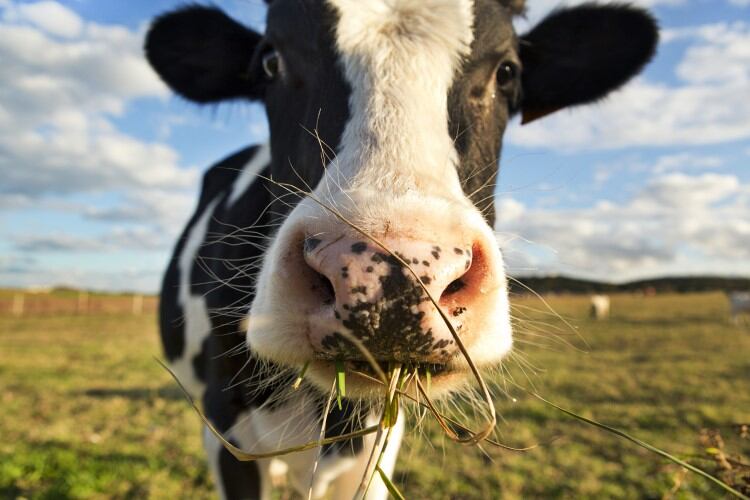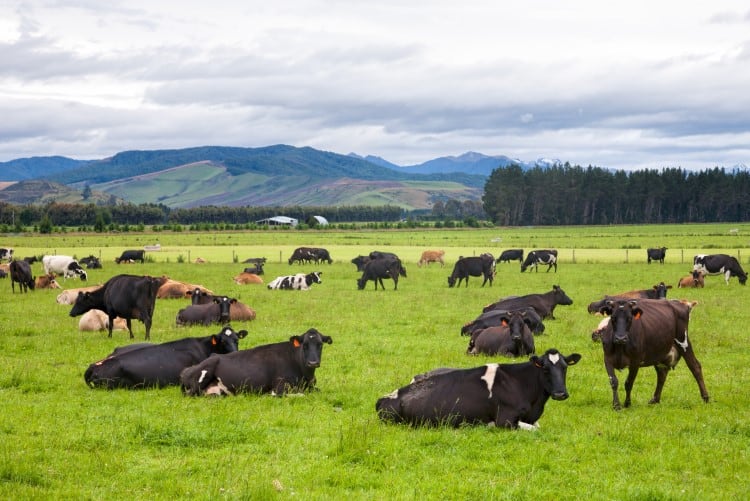Dairy and agrifood producers would be all too aware of the difficulties in tackling scope 3 emissions – the indirect emissions that occur up and down the value chain, including those linked to milk production, manure management, and feed. With scope 3 emissions comprising the vast majority of emissions produced by the dairy sector, pressure is on producers to balance profitability and sustainability; a journey that starts with measuring emissions and conducting a life cycle analyses (LCA).
Agriculture isn’t alone – the financial sector is facing similar challenges. This is due to so-called financed emissions, i. e. emissions produced by a lender’s borrowers, which contribute to financial institutions' scope 3 emissions and can be hundreds of times higher than the lender's own emissions.
- Traditional green financing – including green loans and social bonds - is used to fund projects with clearly set-out climate or social benefits (e. g., installing solar panels or acquiring electric milk tankers).
- Sustainability-linked loans are designed to incentivize companies to lower their climate impact by offering them attractive loan terms (e.g. lower interests) if specific KPIs are met.
Enter sustainability-linked finance, a relatively new set of products that lenders offer to encourage businesses in high-emitting to achieve certain sustainability goals in order to access favorable borrowing conditions or incentives.
But applying for this type of product can be tricky – particularly if a business is new to measuring emissions and carrying out life cycle analysis in order to obtain the required proof that the lender needs. But what if the lender offered access to a life cycle analysis tool to somewhat simplify the process for the borrower?
This is the model that dsm-firmenich has been testing with several global lenders, most recently the International Finance Corporation (IFC), by providing the company’s LCA tool Sustell as part of sustainability-linked financial products. “We partner with several leading banks in different regions of the world that are actively committed to monitoring and reducing the environmental footprint of their portfolios, particularly within the food and agriculture sectors,” said Dr Heinz Flatnitzer, global head of emissions, value management, at dsm-firmenich.
“A bank’s financed emissions are hundreds of times larger than their own scope 1 and 2 emissions - according to CDP, the finance sector’s funded emissions are over 700 times greater than their own direct emissions. Many banks have pledged to become net-zero with more than 130 banks signing the Net Zero Banking Alliance, committing them to aligning their lending and investment portfolios with net-zero emissions by 2050.”
Meanwhile, for food and agriculture companies, measuring and reducing their own emissions is becoming increasingly important for those wanting access to capital. “With financial institutions able to steer capital based on sustainability, farms and food producers who reduce their environmental footprint and demonstrate their commitment to meeting sustainability goals will have a competitive advantage in terms of access to capital and being able to seize market opportunities,” Dr. Flatnitzer added.
How agrifood businesses can achieve this today has changed, he explained: “The main challenge for the banks is getting a clear and accurate picture of their financed emissions, which requires robust life cycle assessment methodologies backed by real data.
“However, we have been seen a clear shift in recent years from a simple, qualitative approach to footprint estimation to a science- and fact-based quantitative one using full LCA to calculate footprints and demonstrate real GHG emissions reductions. And it often leads to a different way of thinking: rather than simply requesting information about environmental impact, leading banks are actively supporting their customers on the journey towards more sustainability. This is a competitive advantage for banks these days – and will become standard in the coming years.”
A win-win approach
Indeed, lenders are increasingly adopting this outcomes-based financing model. According to Bloomberg, US loans focused on ESG outcomes increased $52bn in just six months in 2021, a 292% increase compared with all of 2020. Besides sustainability-liked instruments, other popular products include green bonds and loans (for projects with positive environmental outcomes, e.g. improved wastewater management) and social bonds (related to positive social outcomes, such as food security and affordable housing).
Dutch multinational banking institution ING was one of the first on the market to launch a sustainability-linked loan, back in 2017. In the next few years, the bank reported that sustainability became as an increasingly important factor for companies’ strategic decision-making throughout the pandemic. “Sustainability-linked instruments are a way for companies to show they’re on a transition pathway to a more sustainable business model,” explained Leonie Schreve, ING’s global head of Sustainable Finance.
One notable deal ING closed in that period was with Dutch dairy co-operative FrieslandCampina; in March 2021, the co-op committed to lowering its dairy farms’ GHG emissions in order to secure lower interest rates on a €300m/$324m sustainability-linked loan for each year it met its target.
Another major Dutch food & agri bank, Rabobank, offers a range sustainable funding instruments, such as sustainability-linked loans.
The US lending market also appears strong as far as green loans and sustainability-linked products are concerned. White & Case LLP reported that while the overall US loan market contracted by 24% in 2022, the issuance of sustainability-linked loans decreased by just 12% and green loans rose 46%. The US sustainability-linked loans market is now over 10 times bigger than it was pre-pandemic, the analysts said, reflecting how businesses are increasingly prioritizing sustainability under pressure from regulators, consumers and investors.
dsm-firmenich has its own success stories. Dr. Flatnitzer told us that Ecuadorian shrimp producer Grupo Almar chose Sustell to measure and validate the firm’s footprint. “The goal of Almar’s COO Wolfgang Harten was to improve the sustainability of shrimp production – and it was also required by its finance institution. Thus, for designing the project and the targets we worked closely with both Almar and the bank.
“This approach is a win-win dynamic for both farmers and banks. Farmers can gain access to vital capital resources and can promote more sustainable products, while banks can elevate their sustainability credentials by financing environmentally conscious food and agricultural operations.”
“This is an emerging area, and integrators seeking loans often do not know what they need to provide to meet the banks’ sustainability requirements - for example, in terms of footprint calculation and data quality. Sustell provides credible methodology using primary data for both sides of the equation: lender and borrower."
Partnership with IFC
As for dsm-firmenich’s recently-announced partnership with IFC, the bank is offering Sustell in a program in Brazil to monitor emissions in the dairy supply chain.
Sustell is an ISO-assured software-as-a-service (SaaS) farm-level footprinting tool that can capture animal protein production emissions data but also measure the environmental impact of consumer food products, making it a true farm-to-fork solution suitable for businesses up and down the value chain.
“IFC offers sustainability-linked financing and related expertise, meaning that financing is based on measurable emissions reduction targets, while dsm-firmenich provides the Sustell LCA platform and expert advice in animal nutrition,” Dr. Flatnitzer explained. “In this current program, customers getting loans from IFC commit to measuring their baseline environmental footprints using their own primary data in Sustell, as well as to making real sustainability improvements. In addition, we agreed on special project and license conditions for IFC customers.”
Dr. Flatnitzer said stakeholders can implement Sustell both via IFC or another lender, or directly by contacting dsm-firmenich.
“Sustell can be rapidly and seamlessly deployed across various animal protein value chains, including the dairy industry and other livestock sectors,” he added. “We’ve found it beneficial to work with feed mills, integrators, farm consultants, co-operatives, CPG companies and banks in order to help farmers get the most value from using Sustell. Larger producers can contact dsm-firmenich directly to get started.”




